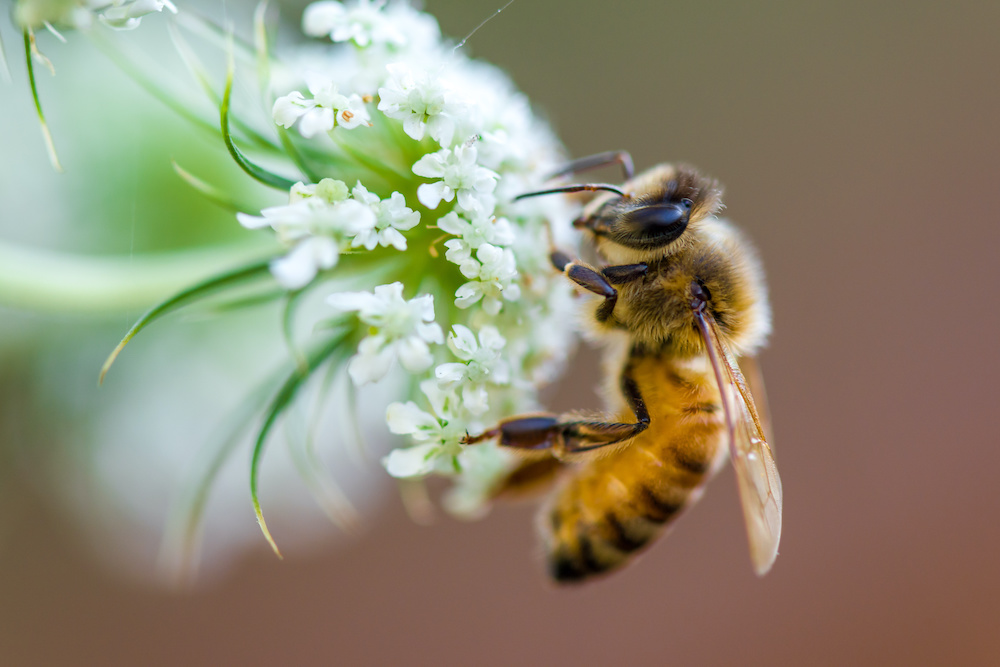Bees are astonishing insects, each group performing incredible feats as part of their daily tasks. Although the attention often goes to the queen, the worker bees are behind the scenes to ensure everything is in order. Looking at the many hats that worker bees wear in their roles is surprising! Whether walking through a field or spending time in the garden, it is the worker bees that one will encounter as they float effortlessly from flower to flower. Honestly, worker bees keep a beehive functioning and are the muscle behind the pollination process. The immeasurable value of worker bees to a beehive's health is more profound than one may think.
Why Worker Bees Are So Unique
The worker bee relentlessly fulfills their hive duties day in and day out. The many roles, or hats, of a worker bee vary depending on the bee's age. Young worker bees will act as nurse bees that feed and care for bee larvae. Nurse bees process nectar being brought back to the hive, ensure the queen's belly is full, and make honey. Older worker bees more often leave the hive to collect the nectar, pollen, and water because the hive's survival depends on it. Worker bees who forage work hard, from sunup to sundown, and have the most dangerous and tiring job of all the bees.
The Life Cycle of a Worker Bee
The birth of a worker bee is just the beginning. In the first three days of a worker bee’s birth, they are responsible for removing any dead bees from the hive. This job is tiring because they must take the dead bees or larvae that did not survive far enough from the hive that the risk of disease is mitigated. Within the first week following that, worker bees move to their role as providers for drone babies. Drone babies can’t feed themselves, so worker bees feed them so they can survive and thrive.
After the first week, worker bees become the queen’s right-hand helpers. The worker bees become the queen’s attendants, which is arguably their most important job of all. Worker bees feed and groom the queen, ensuring she has everything she needs. The critical part of the worker bee's role at this time is spreading the queen's pheromones throughout the hive to let the other bees know their queen is still healthy and laying a sufficient number of eggs. The queen's pheromone scent drops off as she ages and lays fewer eggs, which is when the bees begin brooding for a new queen.
The second and third weeks of a worker bee's life are busy with pollen packing, sealing honey, and building honeycomb. Worker bees are also tasked with fanning the hive to help water evaporate at an ideal rate, keeping the hive at the perfect temperature for the queen and baby eggs. Put simply, worker bees are the hive’s air conditioning.

Get help with your beehive or bee swarm removal! Call Today 760-224-3040 Or 951-265-8292!
The Worker Bee’s Social Circle
In the first week of life, the worker bee is a nurse bee, and interactions are primarily with drones who need help to survive. In nurse mode, worker bees may check on the larvae more than 1,200 times in one day! In the second week, the worker bee spends lots of time tending to the queen.
Worker Bees’ Role During Swarming
Hives swarm when the old queen is running out of pheromones and eggs to lay. Half the worker bees stay with the original hive in swarming, and the other half leave with the older queen to find a new hive. Swarming is a positive thing and part of the reproduction process. Swarms travel together and will find spots to rest – sometimes for a few hours and sometimes for a few days. All those peculiar news stories of swarming are when large swarms of bees end up in a precarious spot in the swarming process. When people encounter swarms, experienced beekeepers recommend that they leave a swarm to move on its own. When this isn't possible, relying on a professional humane bee removal company is the best way to ensure the safety of people and bees!
Worker Bees Finish Strong
Worker bees will live anywhere from 6 weeks to 6 months. Much of their life span depends on when they serve as a worker bees. Summer worker bees live shorter lives because they never stop working! Worker bees in winter often live longer because they have an opportunity to rest due to the weather. Winter worker bees tend to be much fatter! When worker bees sting to protect their hive, they will perish. The stinger will detach after stinging and rip the organs out of the worker bee. Talk about taking one for the team!
Regardless of the name or role of bees in a hive, every bee is part of a balanced ecosystem. The good news is that many bee species’ populations appear to be on the rise again, which has beekeepers and scientists excited! It is essential to do our part when it comes to caring for bees, so if you have any questions or concerns about bees in your area, contact a local beekeeper! Are you in Southern California? Contact D-Tek today at 760-224-3040!
